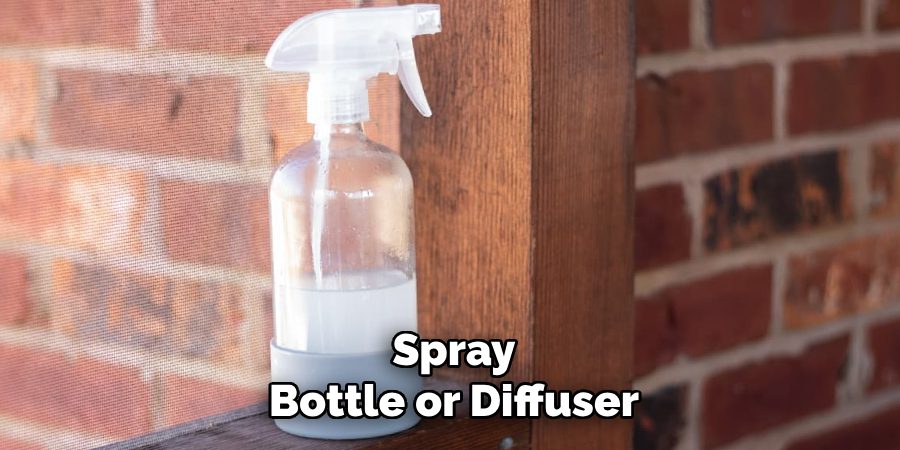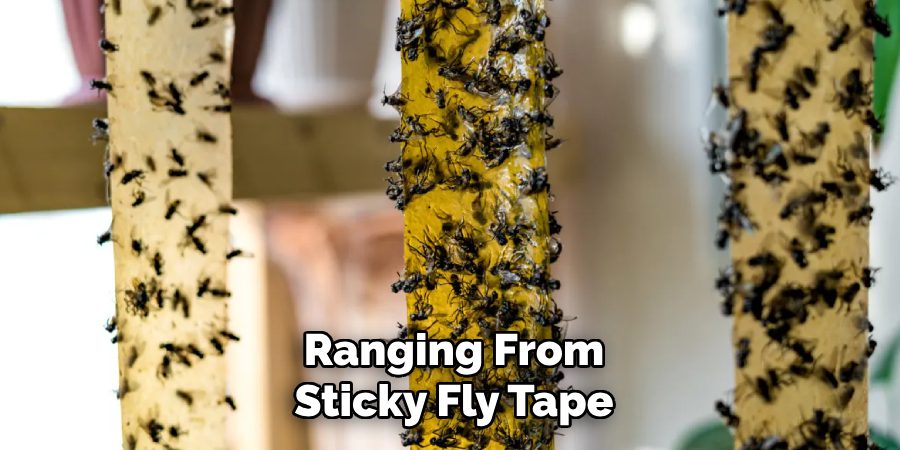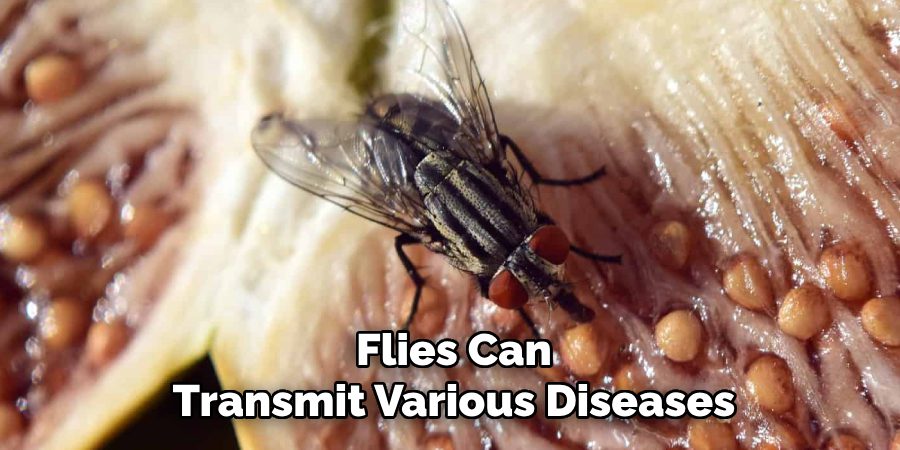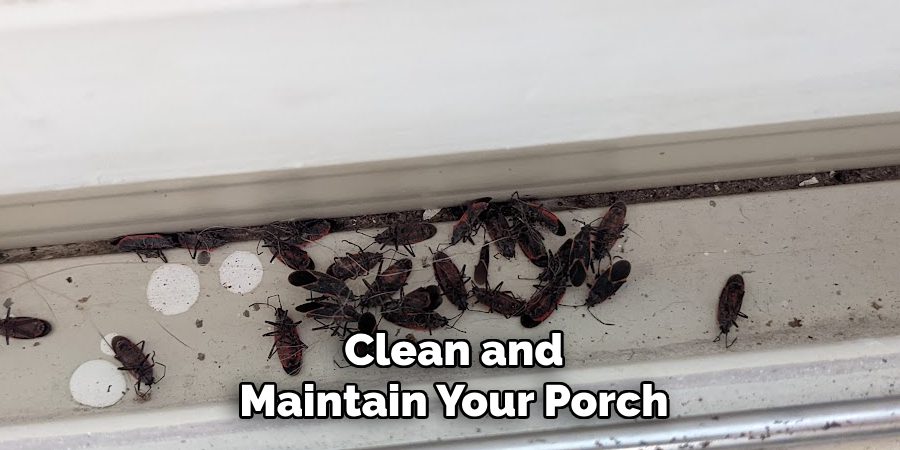Flies can quickly become a nuisance when you’re trying to enjoy time on your porch. Their constant buzzing and the potential for spreading germs make them unwelcome visitors. Fortunately, there are several effective strategies you can use to keep flies at bay and maintain a clean, comfortable outdoor space.
This guide on how to get rid of flies on the porch will walk you through practical steps to eliminate flies and prevent them from returning.

Why Are Flies Attracted to Your Porch?
Before we discuss how to get rid of flies, it’s important to understand why they are attracted to your porch in the first place. There are a few reasons why flies may be drawn to this area:
Food:
If you often eat meals or snacks on your porch, there is likely leftover food residue that can attract flies. This can include crumbs, spilled drinks, and even pet food.
Garbage:
If there is a nearby garbage bin or compost pile, flies may be drawn to the scent of decaying organic matter.
Standing Water:
Flies are also attracted to standing water, as it provides a breeding ground for them to lay their eggs.
Now that we understand the reasons why flies are attracted to our porches let’s dive into some effective methods to get rid of them.
Needed Materials
Fly Swatter:
A simple and inexpensive tool that can help you eliminate individual flies quickly.
Fly Tape:
Sticky strips of paper or ribbon coated with a fly attractant to trap flies.
Bug Zapper:
An electronic device that attracts and kills flying insects by emitting UV light.
Essential Oils:
Certain essential oils, such as peppermint, eucalyptus, and lavender, have been found to repel flies. You can use them in a spray bottle or diffuser on your porch.

8 Step-by-step Guidelines on How to Get Rid of Flies on the Porch
Step 1: Clear Any Food Sources
Begin by thoroughly cleaning your porch to remove any food residues that might attract flies. Sweep up crumbs, wipe down tables and chairs, and ensure all food spills are cleaned promptly. If you feed your pets on the porch, make sure to remove their bowls and wash them after each meal.
Additionally, avoid leaving fruit, sugary drinks, or other perishables outside, as these can quickly become magnets for flies. Properly disposing of food waste in sealed garbage bins will also help minimize attractants.
Step 2: Remove Standing Water
Inspect your porch and the surrounding area for any sources of standing water. Items like plant saucers, buckets, and even clogged gutters can collect water, creating an ideal environment for flies to breed. Empty and clean these items regularly to eliminate potential breeding grounds.
If you have decorative water features, such as fountains, consider treating the water with non-toxic mosquito or fly repellents that are safe for humans and pets. Ensuring proper drainage and keeping the area dry will significantly reduce the fly population around your porch.
Step 3: Utilize Fly Traps
Fly traps are an effective way to capture and reduce the number of flies on your porch. There are various types of traps available, ranging from sticky fly tape to more advanced reusable traps. Sticky fly tape can be hung in areas where flies are most active, using an attractant to lure them onto the tape. For a reusable option, you can purchase traps that contain bait to draw flies into a container where they cannot escape.
Alternatively, you can create your own DIY fly trap using a plastic bottle, some water, and sugar or vinegar as bait. Simply cut the top off the bottle, invert it to create a funnel, and secure it above the bait inside the bottom half of the bottle. Place these traps in strategic areas around your porch for maximum effectiveness. Remember to regularly replace or clean the traps to maintain their efficiency.

Step 4: Use Natural Repellents
As mentioned earlier, certain essential oils have been found to repel flies and other insects. You can create your own natural fly repellent by mixing a few drops of essential oil with water in a spray bottle. Spray this solution around your porch and on any potential entry points, such as doors and windows.
Additionally, planting herbs like basil, mint, and lavender around your porch can also help deter flies with their strong scents. Plus, they add some greenery and character to your outdoor space!
Step 5: Install Screens or Netting
Installing screens or netting is an effective way to physically block flies from entering your porch area. Screen doors and windows can provide a barrier that allows fresh air to circulate while keeping pests out. If your porch is open, consider adding mesh netting or curtains around the perimeter to create a fly-free zone.
These materials are easy to install and come in various styles to suit your porch’s design. Ensure that all screens and nets are tightly secured and free of tears or holes, as even small gaps can allow flies to get through. Regularly inspect and maintain these barriers to ensure they remain effective in keeping unwanted pests at bay.
Step 6: Utilize Citronella Candles
Citronella candles are a popular choice for repelling flies and other insects. These candles contain citronella oil, a natural repellent that is released when the candle is lit. You can place these candles on your porch or around the perimeter to create a protective barrier against flies. Be sure to follow proper safety precautions when using any open flames outdoors.
You can also incorporate citronella plants around your porch for a more natural and long-term solution. These plants contain the same oil found in candles and can help keep flies away while also adding greenery to your outdoor space.
Step 7: Invest in a Bug Zapper
Bug zappers are another electronic device that uses light to attract and kill flying insects, including flies. They work by emitting UV light, which is irresistible to many pests, causing them to fly into an electrified grid where they are instantly killed. These devices are best used at night when flies are most active and can cover larger areas than other methods.
Keep in mind that bug zappers may also attract beneficial insects like butterflies and bees, so it’s essential to position them away from areas where these insects frequent. They also require regular maintenance, such as cleaning the grid and replacing bulbs, to remain effective.
Step 8: Seek Professional Help
If none of these methods seem to work or if you have a severe fly infestation on your porch, it may be time to seek professional pest control services. Pest control professionals have the knowledge, experience, and specialized tools necessary to effectively eliminate flies from your porch and prevent future infestations.
Following these tips on how to get rid of flies on the porch and regularly maintaining your porch can help keep flies at bay and allow you to enjoy your outdoor space without unwanted pests. Remember to always use safe and environmentally friendly methods when dealing with pest control to protect yourself, your family, and the environment. Happy porch-sitting!

Frequently Asked Questions
Q: Can Flies Carry Diseases?
A: Yes, flies can transmit various diseases and bacteria through their contact with food, surfaces, and waste. This is why proper fly control is essential to protect your health and the health of those around you.
Q: Can Flies Be Harmful to Pets?
A: Yes, flies can be harmful to pets. They can carry diseases or bacteria that can make your pets sick if ingested or exposed to through open wounds. Additionally, flies can irritate and stress out animals, causing discomfort and potential behavioral issues.
Q: How Often Should I Clean and Maintain My Porch for Fly Control?
A: It is recommended to clean and maintain your porch at least once a week to prevent any build-up of debris or standing water that may attract flies. Regularly inspecting and addressing possible entry points will also help keep your porch fly-free. Additionally, be sure to regularly clean and replace any fly traps or repellents that may lose their effectiveness over time.

Q: Can I Use Pesticides to Get Rid of Flies on My Porch?
A: While pesticides can effectively eliminate flies, they may also harm beneficial insects and pose a risk to human health and the environment. It is best to explore natural and eco-friendly methods first before resorting to pesticides as a last resort with proper precautions. If you do use pesticides, always carefully follow the instructions and safety guidelines provided by the manufacturer.
Conclusion
Having flies buzzing around your porch can quickly ruin an otherwise enjoyable outdoor experience. By following these steps and utilizing different methods for repelling and eliminating flies, you can create a fly-free porch and enjoy your outdoor space to the fullest. Experiment with different techniques and find what works best for your specific situation.
With regular maintenance and proper prevention methods on how to get rid of flies on the porch, you can keep flies away from your porch all season long. So go ahead, sit back, relax, and soak up some sunshine on your fly-free porch! Enjoy the great outdoors without any unwanted pests buzzing around. Cheers to peaceful porch-sitting ahead!

Professional Focus
Oliver Wood, a passionate patio designer, specializes in creating comfortable and inviting outdoor spaces that enhance relaxation and entertainment. His work combines a deep understanding of design with a love for nature, making him a standout professional in the field of outdoor living spaces. Through his thoughtful approach, he transforms everyday patios into extraordinary retreats for family and friends.
About the Author
Oliver Wood, a skilled patio designer, shares his expertise on outdoor living through his designs and insights. With a background in patio design and a genuine passion for creating beautiful spaces, he encourages others to invest in their outdoor environments, enhancing their homes with functional and inviting spaces for relaxation and entertainment.
Education History
University: Virginia Union University
Oliver’s education equipped him with the knowledge and skills to design patios that merge aesthetics with comfort, transforming outdoor areas into beautiful extensions of the home.
Expertise:
- Patio Design and Outdoor Living Spaces
- Functional and Aesthetic Landscaping
- Comfortable and Inviting Outdoor Environments
- Design Philosophy for Family-Oriented Spaces
- Creating Spaces for Relaxation and Entertainment
